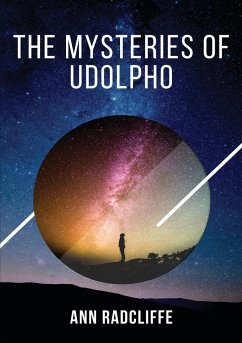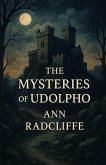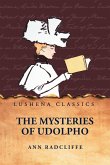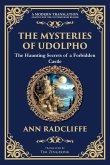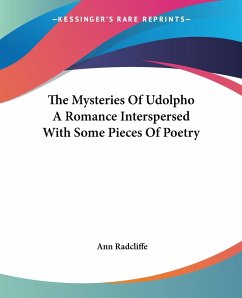The Mysteries of Udolpho By Ann RadcliffeThe Mysteries of Udolpho, by Ann Radcliffe, appeared in four volumes on 8 May 1794 from G. G. and J. Robinson of London, which paid her £500 for the manuscript. Her fourth and most popular novel, The Mysteries of Udolpho tells of Emily St. Aubert, who suffers, among other misadventures, the death of her mother and father, supernatural terrors in a gloomy castle and machinations of an Italian brigand. Often cited as the archetypal Gothic novel, The Mysteries of Udolpho and Radcliffe's novel The Romance of the Forest play a prominent role in Jane Austen's novel Northanger Abbey, where an impressionable young woman reader comes to see her friends and acquaintances as Gothic villains and victims, with amusing results.The Mysteries of Udolpho is a quintessential Gothic romance, replete with incidents of physical and psychological terror remote, crumbling castles seemingly supernatural events a brooding, scheming villain and a persecuted heroine.Modern editors point out that only about one-third of the novel is set in the eponymous Gothic castle, and that the tone and style vary markedly between sections of the work. Radcliffe also added extensive descriptions of exotic landscapes in the Pyrenees and Apennines, and of Venice, none of which she had visitedand for details of which she relied on contemporary travel books, leading to the introduction of several anachronisms. Set in 1584 in southern France and northern Italy, the novel focuses on the plight of Emily St. Aubert, a young French woman who is orphaned after the death of her father. Emily suffers imprisonment in the castle Udolpho at the hands of Signor Montoni, an Italian brigand who has married her aunt and guardian Madame Cheron. Emily's romance with the dashing Valancourt is frustrated by Montoni and others. Emily also investigates the mysterious relationship between her father and the Marchioness de Villeroi, and its connection to the castle at Udolpho.Emily St. Aubert is the only child of a landed rural family whose fortunes are now in decline. Emily and her father share an especially close bond, due to their shared appreciation for nature. After her mother's death from a serious illness, Emily and her father grow even closer. She accompanies him on a journey from their native Gascony, through the Pyrenees to the Mediterranean coast of Roussillon, over many mountainous landscapes. During the journey, they encounter Valancourt, a handsome man who also feels an almost mystical kinship with the natural world. Emily and Valancourt quickly fall in love.
Bitte wählen Sie Ihr Anliegen aus.
Rechnungen
Retourenschein anfordern
Bestellstatus
Storno

